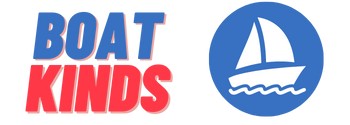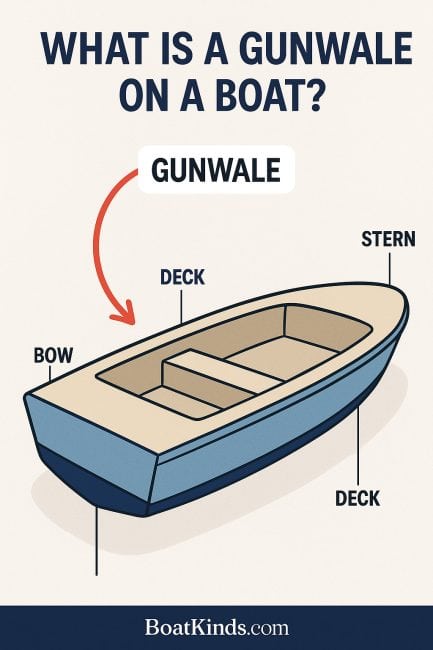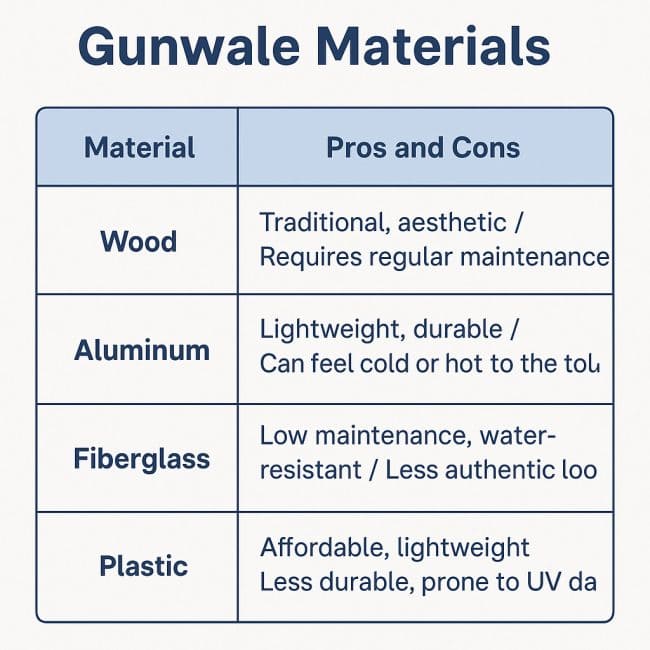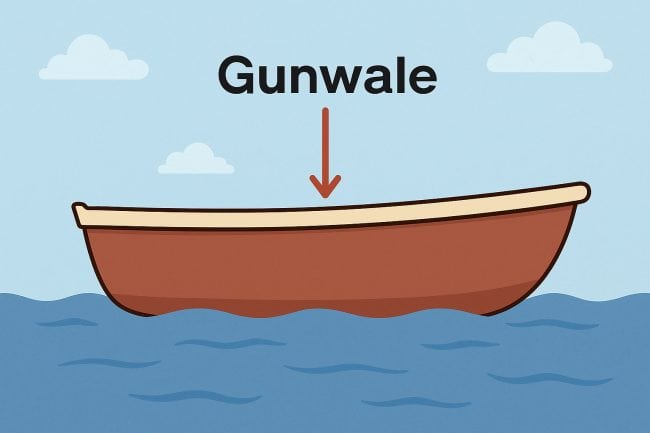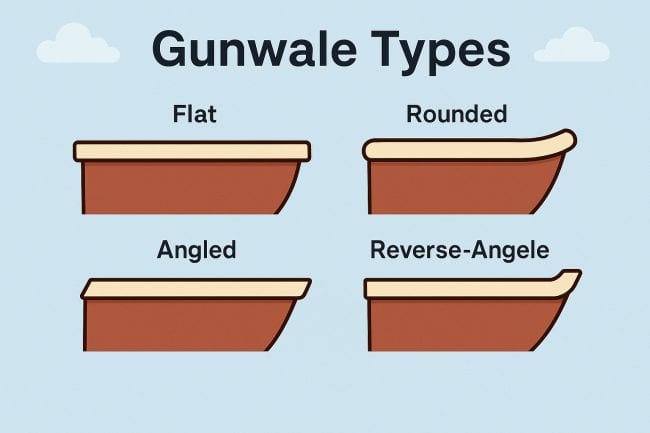Introduction
If you’ve ever stepped onto a boat and noticed the raised edge along the top sides of the hull, you’ve encountered the gunwale — a critical component of marine design. But what exactly is a gunwale on a boat, and why does it matter?
In this guide, we’ll explore its definition, history, function, materials, safety role, and even compare different types across boat styles.
What Is a Gunwale?
The gunwale (pronounced “gunnel”) is the upper edge of a boat’s hull, running along the sides from bow to stern. It provides structural reinforcement, mounting support, and protection against water and impact.
The Origin of the Term “Gunwale”
The word gunwale dates back to the days of warships when this reinforced area supported mounted cannons. “Gun” + “Wale” (meaning a plank or belt) combined to form the term.
Functions of a Gunwale
- Structural Support: Helps hold the boat’s shape and prevents flexing of the hull.
- Safety Barrier: Prevents passengers from accidentally falling overboard.
- Mounting Surface: Common spot to install cleats, rod holders, grab rails, and other accessories.
- Splash Guard: Helps reduce water splashing in during rough seas.
Gunwale Materials: Pros and Cons
| Material | Advantages | Disadvantages |
|---|---|---|
| Wood | Classic look, warm touch | Requires frequent maintenance |
| Aluminum | Lightweight, corrosion-resistant | May dent under heavy impact |
| Fiberglass | Sleek finish, durable | Can be heavy and hard to repair |
| PVC/Rubber | Affordable, low-maintenance | Less sturdy for mounts |
Where Is the Gunwale Located?
The gunwale runs along the top edge of the boat’s hull, connecting the sides and often forming the outer boundary of the deck.
Gunwale vs Gunnel: Is There a Difference?
No. Gunwale is the correct spelling, while gunnel is simply how it’s pronounced. Both refer to the same part of the boat.
Types of Gunwales
- Pontoon Boats: Often include wide gunwales with guard rails and panels.
- Fishing Boats: Feature reinforced gunwales with rod holders.
- Canoes & Kayaks: Slim, lightweight gunwales often made of aluminum or vinyl.
- Speedboats: Streamlined gunwales integrated into the hull.
Safety Considerations
While the gunwale provides structural support and a visual boundary, it’s not designed to be a seat. Sitting on the gunwale can shift the boat’s balance and cause stress or cracking.
How to Maintain a Gunwale
- Inspect regularly for cracks, rust, or wear
- Clean with marine-grade soap and soft brush
- Seal or refinish wooden gunwales annually
- Tighten fittings (cleats, rails, rod holders)
Gunwale Accessories and Customizations
Gunwales aren’t just structural—they’re prime real estate for customization.
- Rod Holders
- Cleats & Chocks
- Grab Rails
- Cup Holders & Utility Trays
- LED Light Strips
Upgrading or Repairing Gunwales: DIY or Pro?
Whether you want a cleaner look or need to replace damaged trim, here’s what you should know.
- Remove old hardware or trim carefully
- Clean the underlying surface thoroughly
- Measure and pre-cut replacement pieces
- Seal joints and screw down with stainless fasteners
- Finish or paint as needed
Gunwale Dimensions & Standards
| Boat Type | Gunwale Width | Height from Deck | Notes |
|---|---|---|---|
| Pontoon Boat | 6–12″ | High | Often includes fencing/panels |
| Bass Boat | 2–4″ | Low | Built for easy casting |
| Kayak | Very Slim | Flush or slightly raised | Often molded plastic |
| Sailboat | Medium | Moderate | Sometimes with wood trim |
Gunwale vs Other Boat Edge Components
| Term | What It Is | How It’s Different |
|---|---|---|
| Gunwale | Upper edge of the hull | Structural & multi-purpose |
| Toe Rail | Low rail inside gunwale | Keeps feet inside, common on sailboats |
| Rub Rail | Outer bumper strip | Protects against docks and impacts |
| Cap Rail | Wood/fiberglass top cover | Decorative and protective |
Examples of Gunwales Across Different Boat Types
- Pontoon Boats: Enclosed gunwales with fencing.
- Fishing Boats: Thin gunwales with cleats, rod holders.
- Kayaks: Molded-in low-profile gunwales.
- Canoes: Wooden or vinyl gunwales riveted to the hull.
- Sailboats: Teak cap rails with toe rails.
Final Safety Reminder
Never underestimate the role of the gunwale in keeping you safe on the water. Avoid sitting or standing on it, overloading it with accessories, or drilling without sealing.
